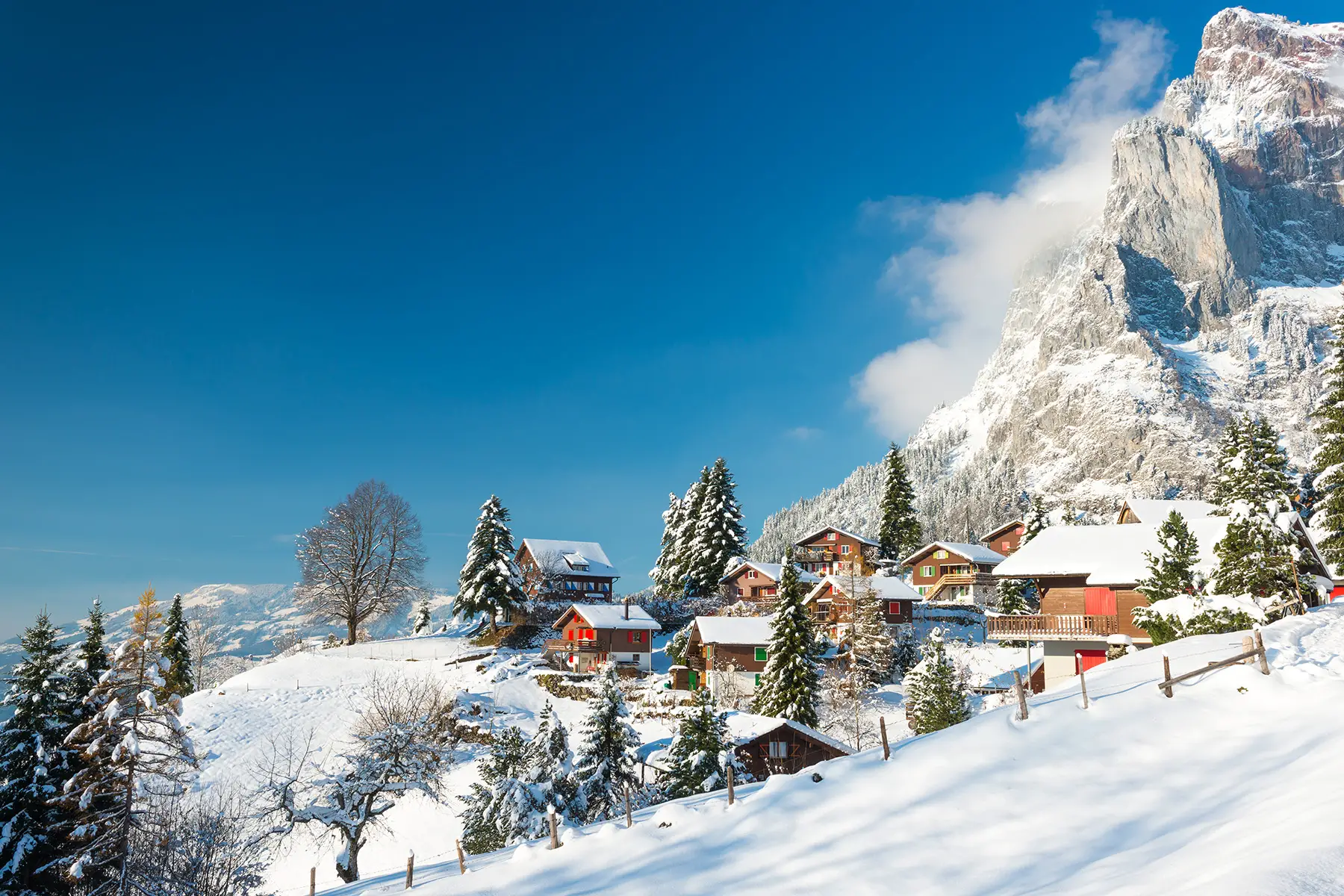For many families, outfitting a home with a Christmas tree during the holidays is a yearly trip down memory lane. Even the most tourist-trap-averse traveler can’t resist the delightful German-style painted wax and delicately carved ornaments from the Käthe Wohlfahrt Christmas shop in Rothenburg. But what is the history of Christmas trees and manger scenes that appear across Europe during the winter holiday season?
European Christmas traditions
Just like these ornaments are a reminder of where you come from, the history of Christmas trees are on display in their own local ornaments. These ornaments are a celebration of each culture’s history, tradition, and ancestry. From a tiny mountain village in Switzerland to the bustling metropolis of Rome, the spirit of the season can be seen in homes, on squares, and up and down the streets.

Ancient Romans celebrated a pagan holiday called Saturnalia on 25 December. This hedonistic, solstice-themed festival honored Saturn, the god of agriculture. It featured toga-clad partiers parading by torchlight through the streets, giving thanks for their crops by drinking and eating heartily. Meanwhile, Romans decorated the city with evergreen wreaths and gave beeswax candles as gifts.
Modern-day nativity scenes in Europe
Modern-day Rome celebrates the holidays with almost as much vigor; they adorn churches, houses, piazzas, porticos, and train stations with lovingly constructed nativity scenes, or presepio (‘manger’ in Italian). At Rome’s Piazza del Popolo, an annual exhibition features 100 presepi, made by artists and schoolchildren. Some are intricate and beautiful; others are of dubious artistic quality. From old to avant-garde, each one is unique, a window into the imagination of its creator.

The ultimate presepio is at the Vatican, where a large nativity scene includes huge chunks of fake sheep’s cheese and bales of straw. It’s accompanied by a 30-meter-plus Christmas tree, a tradition started by the Polish Pope John Paul II. As the first non-Italian pope in eons, John Paul missed having a Christmas tree. So, early in his papacy, he added one to the celebrations on Saint Peter’s Square.
The history of Christmas trees in Europe
The history of Christmas trees begins in what is now Germany; hundreds of years ago, trees were strewn with cookies, apples, nuts, and sugar sticks, then eagerly raided by children. Today, the history of Christmas tree traditions hold strong in this part of Europe. North Americans tend to set up their Christmas trees towards the end of November or early December. In Germany and Austria, though, trees remain bundled up in parking lots until just before 25 December. Right before the big day, parents decorate the tree in secret. Families hide the tree from their children until the dramatic reveal on Christmas Eve.

Though some may think that the Germans buy their trees fairly late, they decorate them with flair and delight. Along with ornaments and candles, they also add cookies and candies, often topping the tree with a Rauschgold Angel, a special tinsel angel made in Nuremberg (Nürnberg). A toy-making center for centuries, Nuremberg is famous for its Christmas market (Weihnachtsmarkt); here, more than 200 wooden stalls fill the main square, selling handcrafted toys and ornaments.
The history of European Christmas tree decorations
Without a doubt, one of the most popular decorations in Germany’s history of Christmas trees is a homemade fruit figurine. The figurine has a walnut head, fig body, and prune limbs; to top it all off, he wears traditional Bavarian folk clothing. According to legend, it was made by a dying Nuremberg man as a thank you gift for local schoolchildren, who sang him back to health.
In the Swiss village of Gimmelwald, holiday decorating is not just a family affair; it involves the entire neighborhood. Just as children open a different paper window each day on an advent calendar, residents here reveal a decorated window on a different house each day. Afterwards, the debut of a new window ignites a celebration. In addition, the locals start a kind of roving block party; neighbors meet friends and enjoy grilled sausages, mulled wine, and folk music. Men take sections of logs, cut the ends into a point, and plant them upright in the snow. Coated with tar, locals set them ablaze; they become torches to light and warm the occasion.

In France, the history of Christmas trees is far less important than the decorations for a crèche. A week before Christmas, families unbox their santons, little clay figurines that represent the people of a typical French village — the doctor, the baker, the mayor, and others — and lovingly arrange them around a stable with the Holy Family. Some families add a figure each day to the circle adoring the Christ child. Kids complete the crèche with twigs and moss from their garden.
Though each country has its own holiday traditions, the general feeling of joy, magic, and wonder is universal this time of year.




